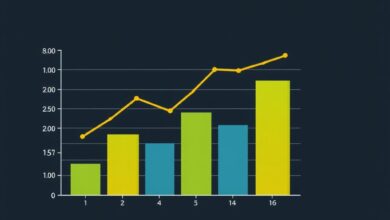How to invest money wisely in your 20s

Begin your financial journey by establishing an automatic savings plan. Allocate at least 20% of your income to various accounts, including high-yield savings and retirement funds. This discipline not only cultivates good habits but also positions you for substantial long-term growth.
Investing in low-cost index funds is another savvy move for individuals in their formative years. These funds typically outperform actively managed options over time, making them ideal for those focused on passive gains. Diversifying your portfolio across different sectors can significantly mitigate risks while capitalizing on market fluctuations.
Consider further enhancing your knowledge of personal finance through online courses or workshops. Understanding the principles of budgeting, debt management, and investment will empower you as a young investor. The more informed you are, the better decisions you’ll make regarding asset allocation and risk tolerance.
Finally, stay committed to a long-term vision. Avoid the pitfalls of chasing short-term trends that may jeopardize your financial health. Instead, prioritize steady progress and revisit your goals regularly to adjust your strategies as needed.
Start with Emergency Fund
Establish an emergency fund of at least three to six months’ worth of living expenses. This discipline provides a safety net against unexpected financial setbacks, such as job loss or medical emergencies.
Focus on saving consistently, allocating a portion of your income each month. Automate transfers to your savings account to ensure you prioritize this goal. Young investors should view this fund not merely as a buffer but as the foundation for long-term growth.
Aim for high-yield savings accounts or money market accounts that offer better interest rates than traditional options. This approach allows your savings to grow while remaining accessible in times of need.
By securing an emergency fund, you create peace of mind and enable yourself to take calculated risks in other financial avenues without the fear of immediate consequences.
Diversify Your Portfolio
Allocate your resources across various asset classes to mitigate risk and enhance potential returns. Young investors should consider including stocks, bonds, real estate, and commodities in their holdings. A balanced mix can provide stability while capitalizing on different market conditions.
Research suggests that a portfolio containing 60% equities and 40% fixed income can yield favorable results over time. Adjust these percentages based on individual risk tolerance and financial goals. For instance, a higher equity percentage may benefit those with a longer investment horizon.
Engage in sector diversification as well–investing in technology, healthcare, consumer goods, and energy sectors can reduce exposure to volatility in any single industry. This approach aligns with long-term growth objectives while catering to varying economic cycles.
International assets also offer an excellent opportunity for diversification. Look beyond domestic markets; investing in emerging markets or global funds can enhance your portfolio’s resilience against local downturns.
Regularly review and rebalance your portfolio to maintain your desired allocation. This practice ensures that you capitalize on gains from outperforming assets while reinvesting into underperforming ones, keeping your strategy aligned with personal finance goals.
Utilize Retirement Accounts
Maximize contributions to retirement accounts like 401(k)s and IRAs. These vehicles not only provide tax advantages but also promote long-term growth through compounding interest.
- 401(k) Plans: If offered by your employer, contribute enough to get the full match, as this is essentially free money. Aim for at least 15% of your salary if possible.
- Roth IRA: Ideal for young investors due to tax-free withdrawals in retirement. Contribute up to $6,500 annually (as of 2023), allowing your savings to grow without future tax burdens.
- Diversification Within Accounts: Within these accounts, prioritize a mix of stocks and bonds tailored to your risk tolerance. Younger investors can typically lean more toward equities for higher growth potential.
Consider automatic contributions to ensure consistent saving habits. Automating deposits into these accounts can help build wealth effortlessly over time. Additionally, regularly review and adjust your portfolio allocation based on changing goals or market conditions.
By prioritizing retirement accounts early in your career, you set a strong foundation for financial health that compounds benefits throughout life.
Invest in Low-Cost ETFs
Opt for low-cost exchange-traded funds (ETFs) to enhance your portfolio without incurring high fees. These funds provide a diversified exposure to various sectors and asset classes, making them ideal for young investors focused on long-term growth. Look for ETFs with an expense ratio below 0.25%, as this significantly impacts returns over time.
Utilizing a buy-and-hold strategy with these funds allows you to leverage the power of compound interest. Regular contributions, even small amounts, can accumulate substantially due to market appreciation and reinvested dividends. This requires discipline but rewards patience.
Consider using robo-advisors that automatically allocate investments into low-cost ETFs based on your risk tolerance and financial goals. This approach simplifies the process and ensures that your holdings remain diversified, reducing individual stock risk.
Track performance periodically but avoid frequent trading; this minimizes transaction costs and maintains focus on long-term objectives. By incorporating low-cost ETFs into your personal finance plan, you set a solid foundation for wealth accumulation throughout your working years.
Learn About Risk Management
Prioritize understanding the risk associated with each financial commitment. Assess your risk tolerance using a scale from conservative to aggressive, allowing you to align your decisions with personal finance goals. Maintain discipline by regularly reviewing and adjusting your portfolio based on performance and market shifts.
Implement stop-loss orders to limit potential losses on trades, ensuring that you don’t exceed your predetermined risk threshold. This practice helps protect savings while aiming for long-term growth.
Diversification remains crucial; allocate assets across various sectors and instruments to mitigate exposure to any single investment’s volatility. Consider incorporating bonds, stocks, and alternative assets for a balanced approach.
Keep abreast of market trends and economic indicators affecting your investments. Utilize analytical tools or consult financial experts to inform your decisions, enhancing your ability to manage risks effectively.
Establish an exit strategy for each investment, detailing when to sell if targets are not met. This structured approach provides clarity during uncertainty, reinforcing discipline in maintaining your financial objectives.
Finally, prioritize continuous education in finance-related topics. The more informed you are about risk management techniques, the better equipped you will be to make sound financial choices that support sustained growth over time.







